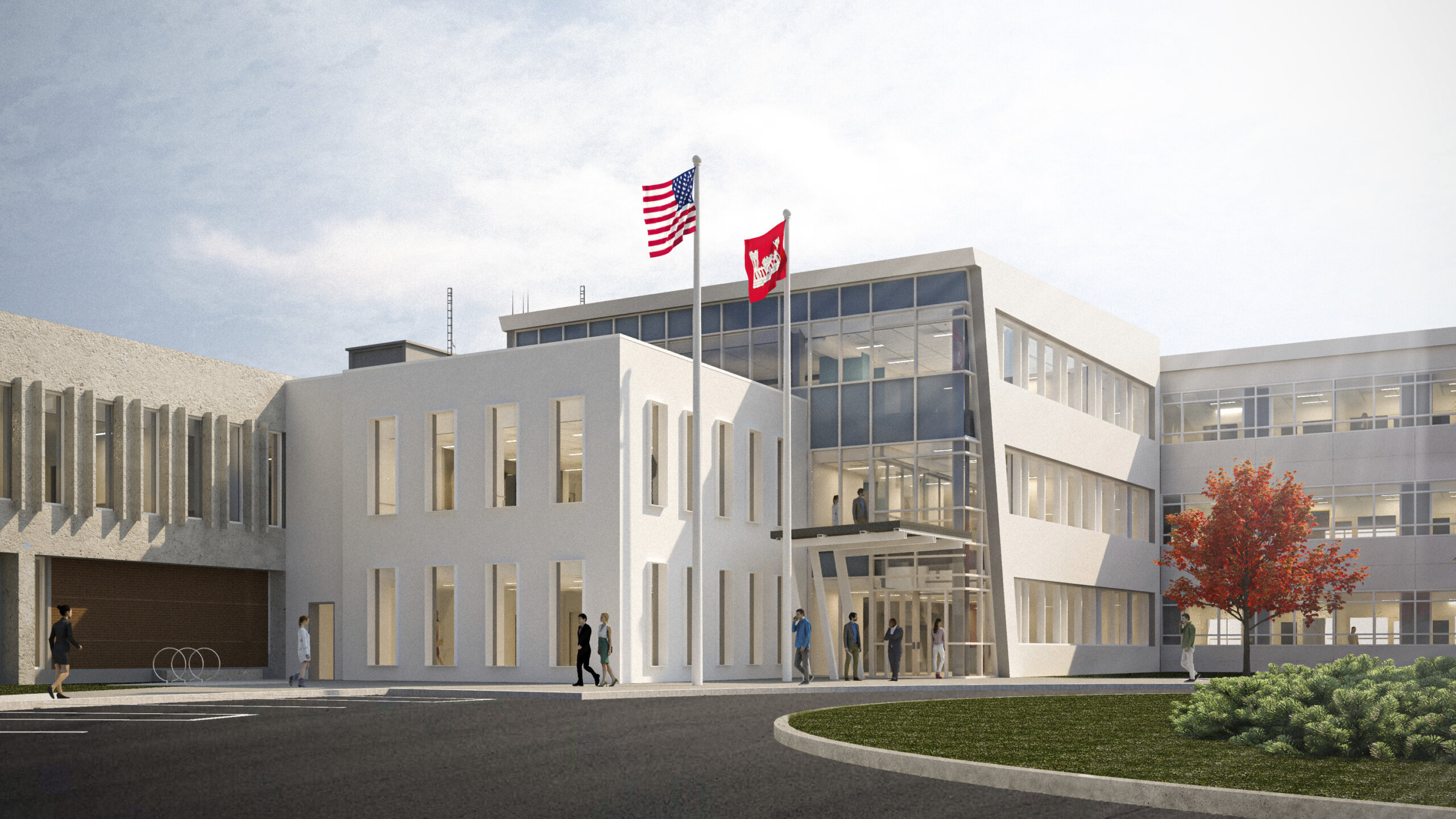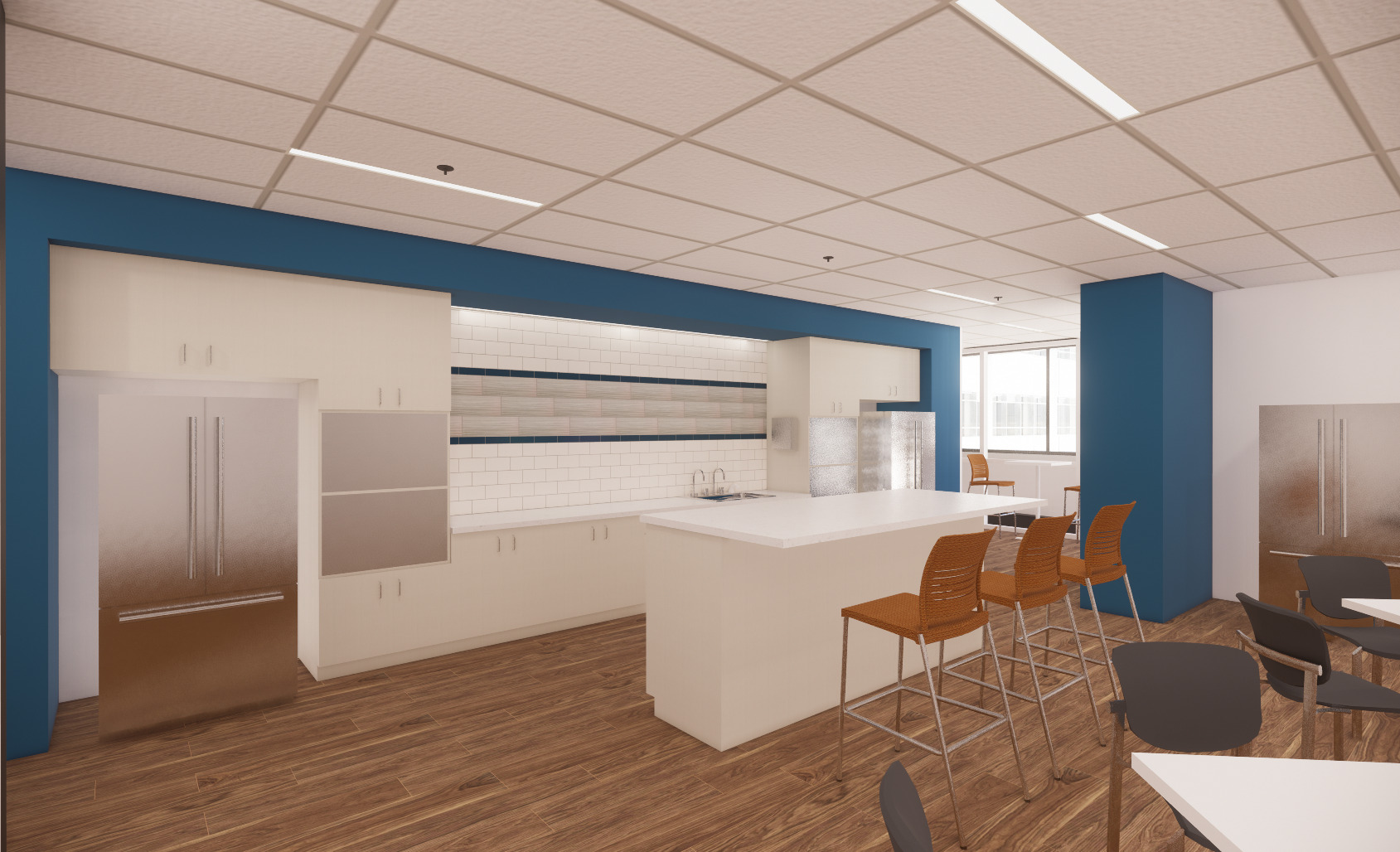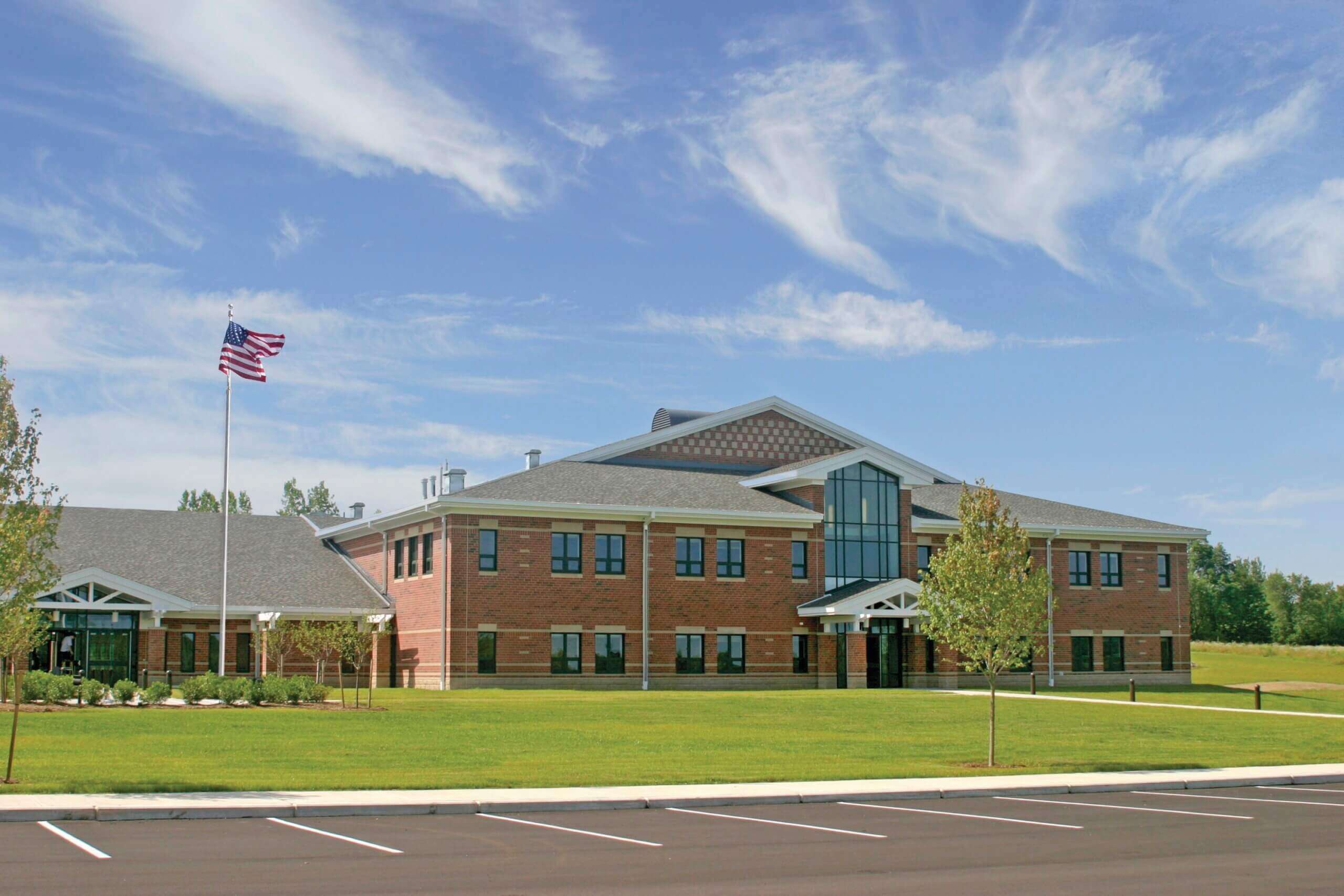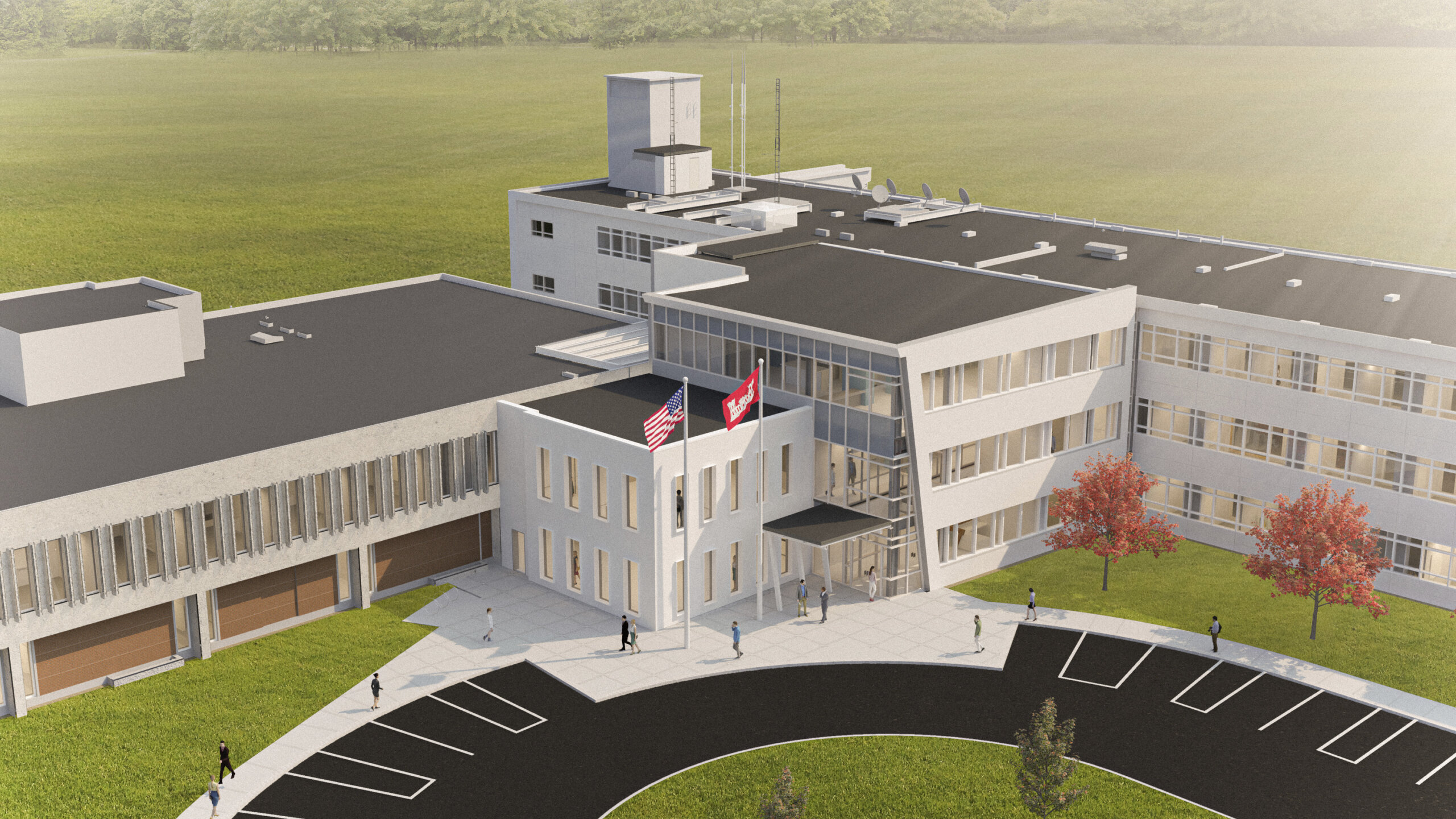
USACE sought to keep the project cost low while providing a much-improved space for its workforce.
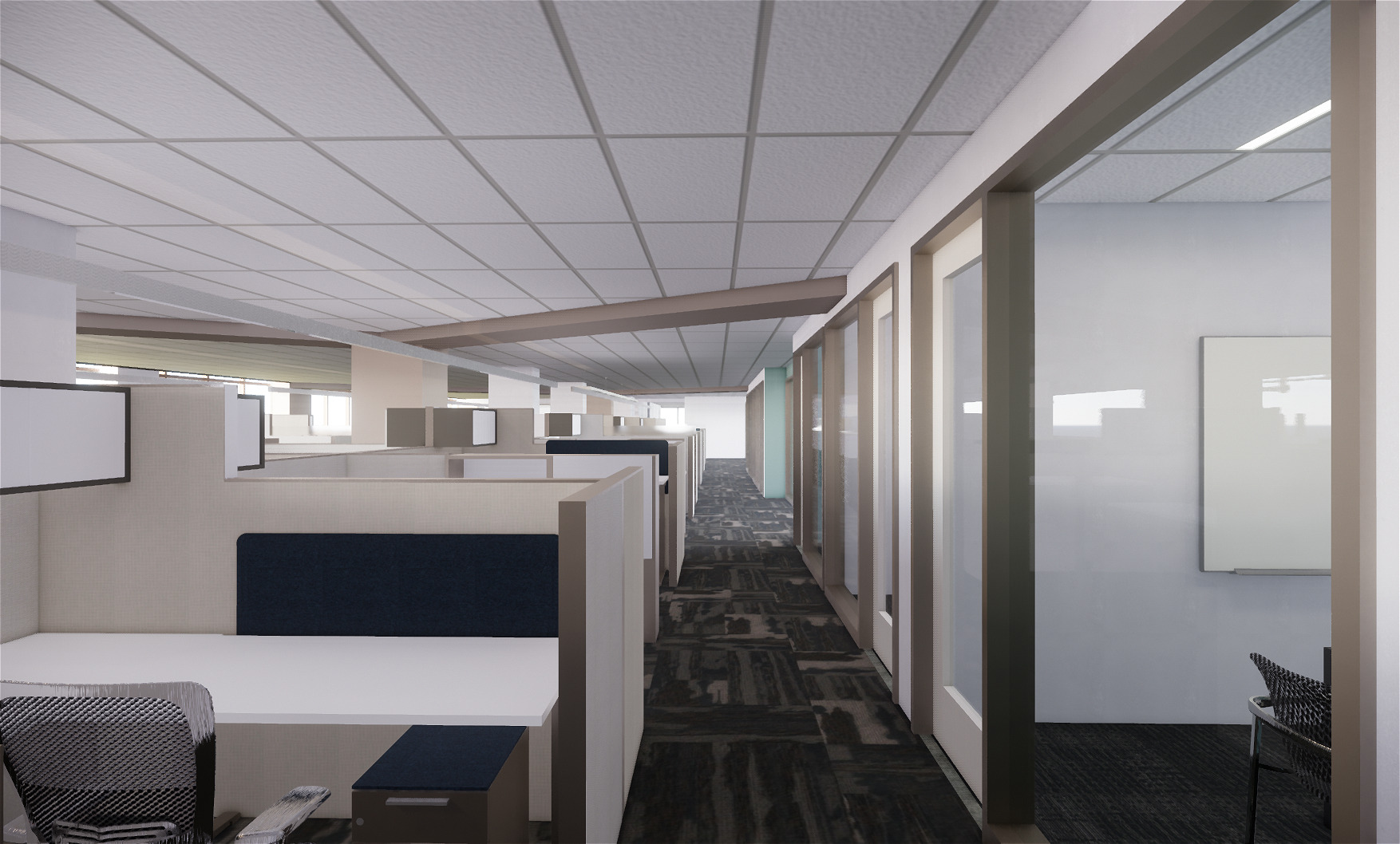
The test fits reduce cubicle and office sizes by up to 12% thanks to smaller work areas with low partitions. This “open office” approach is more typical of workplace projects.
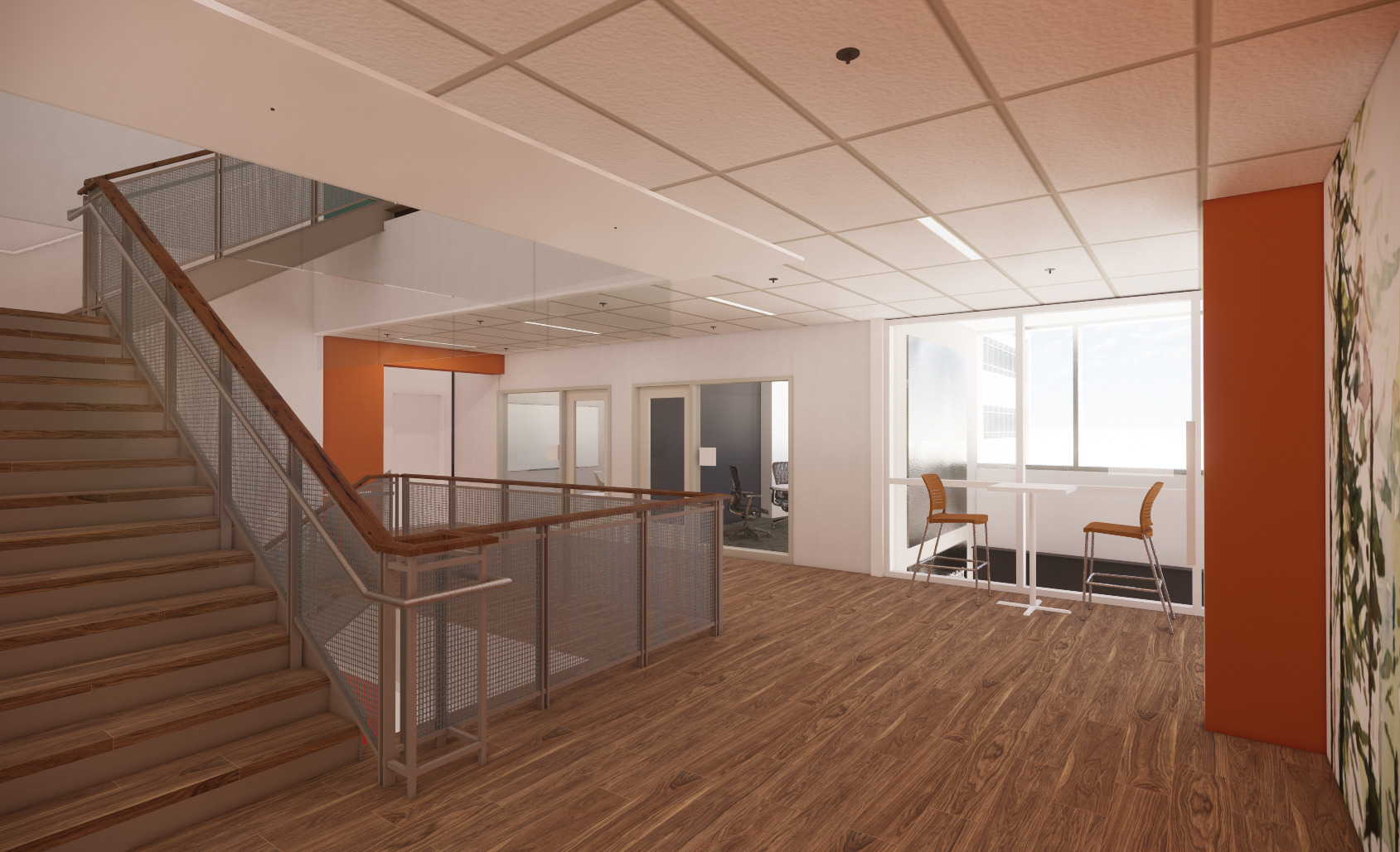
Building users enjoy modern workplace amenities such as phone rooms, conference and collaboration areas of various sizes.
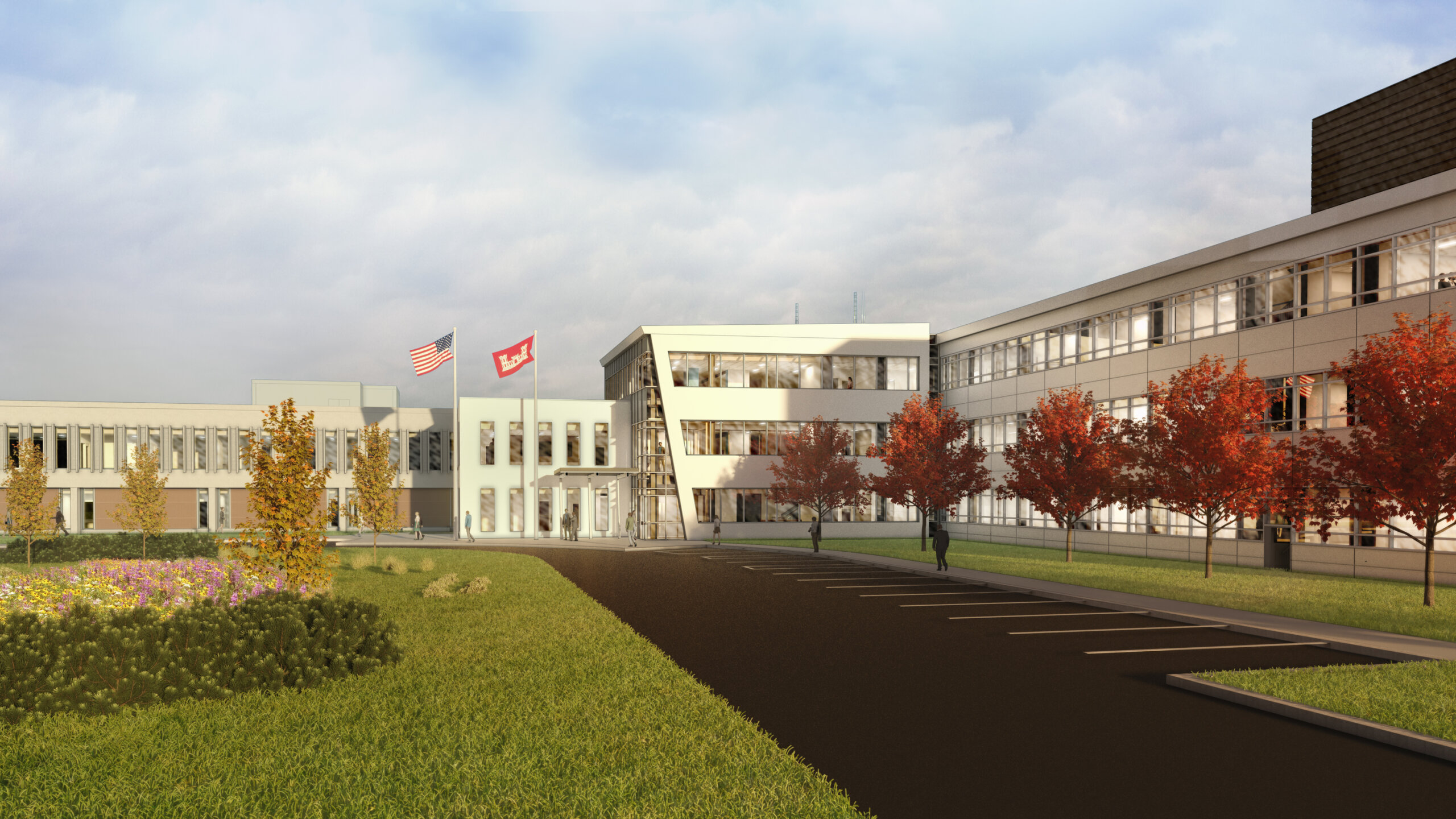
The design focuses on improving the building’s energy efficiency.
By recladding, adding insulation, and replacing the roofs, the performance of the building envelope was greatly improved. Chilled beams were installed to reduce energy consumption, providing both heating and cooling while eliminating the need for ductwork. This innovative solution not only saved space but also lowered maintenance costs.
The project includes a small building addition that unifies the two buildings and engages employees.
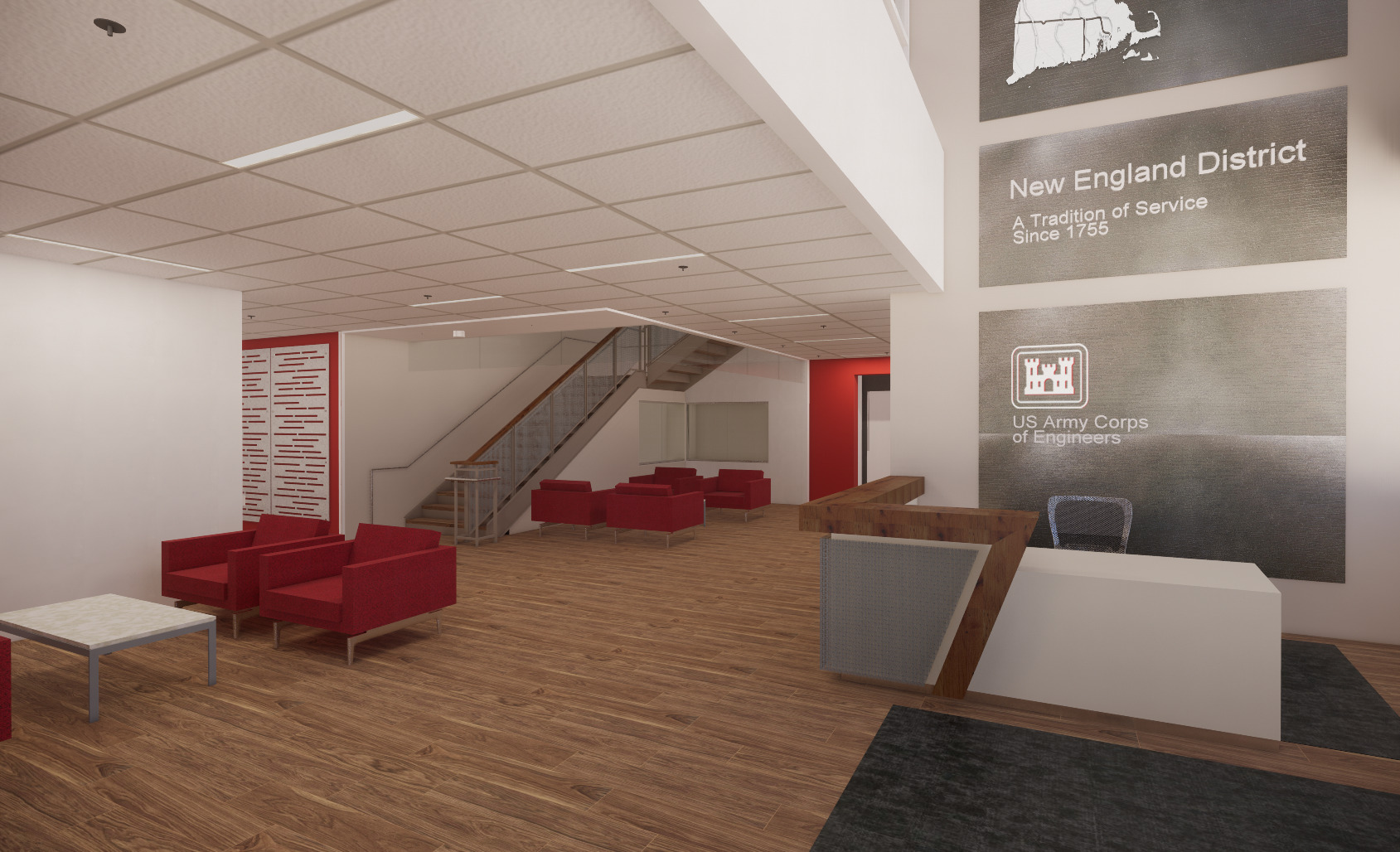
The core includes the main visitor entrance, separate employee entrance, break rooms, and locker rooms. Much of the first floor can convert into gathering zones for holiday celebrations, summertime bake-offs, and other inclusive activities and events.
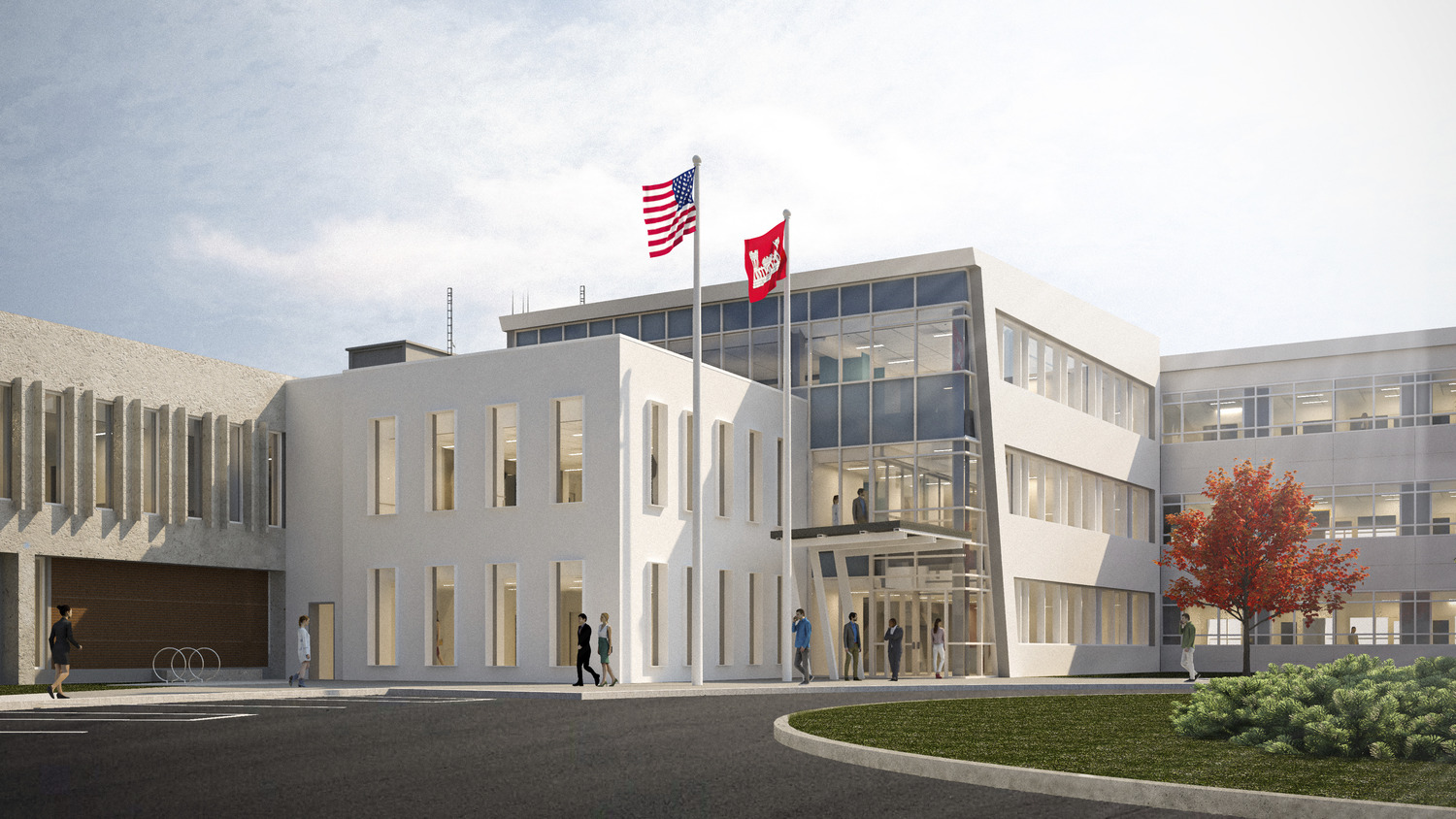
A central core connects both buildings and houses common services. The new main addition incorporates vertical circulation with two elevators and a communicating stair.
Negotiating Between Old and New
|Buildings 1107 and 1109 are located within an area identified as the Air Force Cambridge Research Laboratory (AFCRL) Historic District. The area is eligible for listing in the National Register of Historic Places.
As an undertaking by the Federal Government, the project was subject to review by the Massachusetts State Historic Preservation Office (SHPO). The Massachusetts Historical Commission (MHC)—acting as the Massachusetts SHPO—and Hanscom AFB have an existing Programmatic Agreement for expedited review of projects within the AFCRL Historic District. Per this agreement, the rehabilitation of buildings within the AFCRL Historic District (including Buildings 1107 and 1109) must adhere to the Secretary of the Interior’s Standards for the Treatment of Historic Properties and Guidelines for the Rehabilitation of Historic Buildings and the Department of Defense (DoD) Design Guidelines for Defense Historic Buildings and Districts.
To assist in compliance with these requirements, SMMA solicited professional review and consultancy from Epsilon Associates’ Historic Preservation staff. Upon review of an interim design submission, it was determined that SMMA’s first conceptual design of the building addition and renovations had an “adverse impact” to the goals of the Programmatic Agreement. At the same time, it was understood that no matter what solution was proposed, there would be an adverse impact. As such, the goal became to limit the impact as much as possible.
SMMA realized Epsilon’s suggestions to lessen this impact and provided alternatives that achieved or exceeded their recommendations.
Compromises included:
- Retaining the roof-top penthouse on building 1109 (despite the fact that it is not code-compliant and will not be used)
- Leaving a visible memory of the former building 1107 main entrance on the western side of the building after its demolition
- Matching the existing exterior building material color or texture of the existing buildings on the addition without mimicking them
- Retaining the window pattern in the new addition also without mimicking the original buildings.

